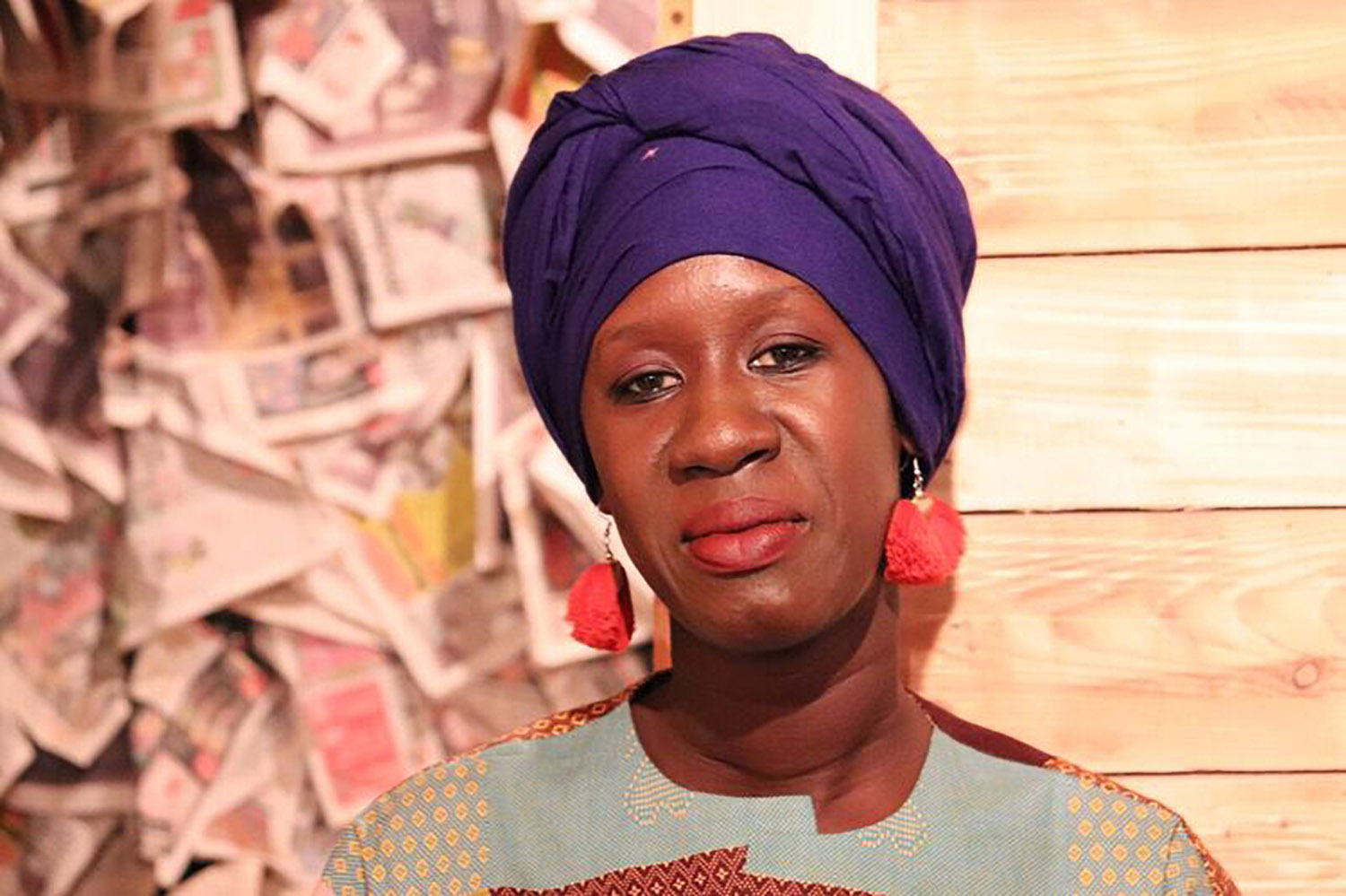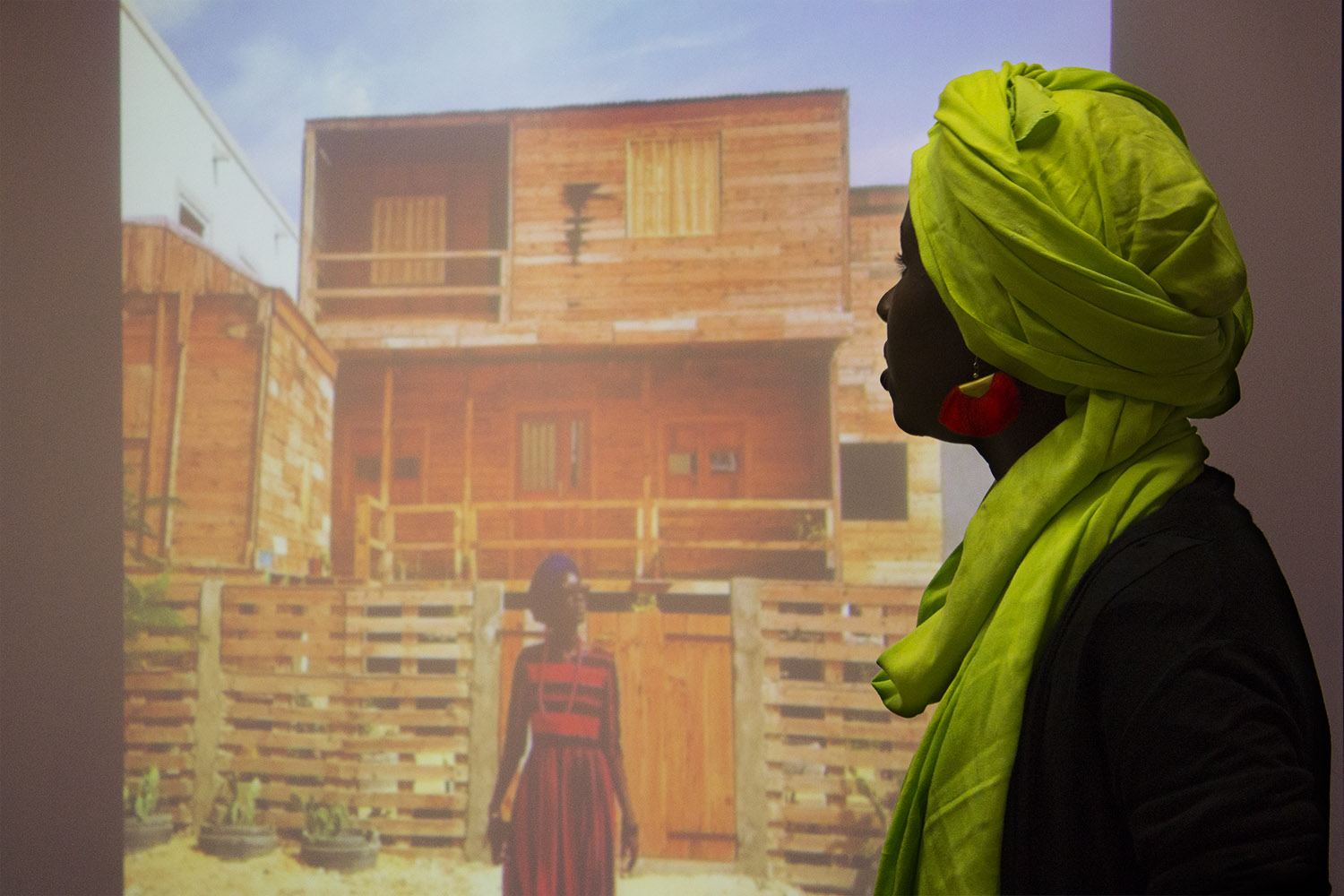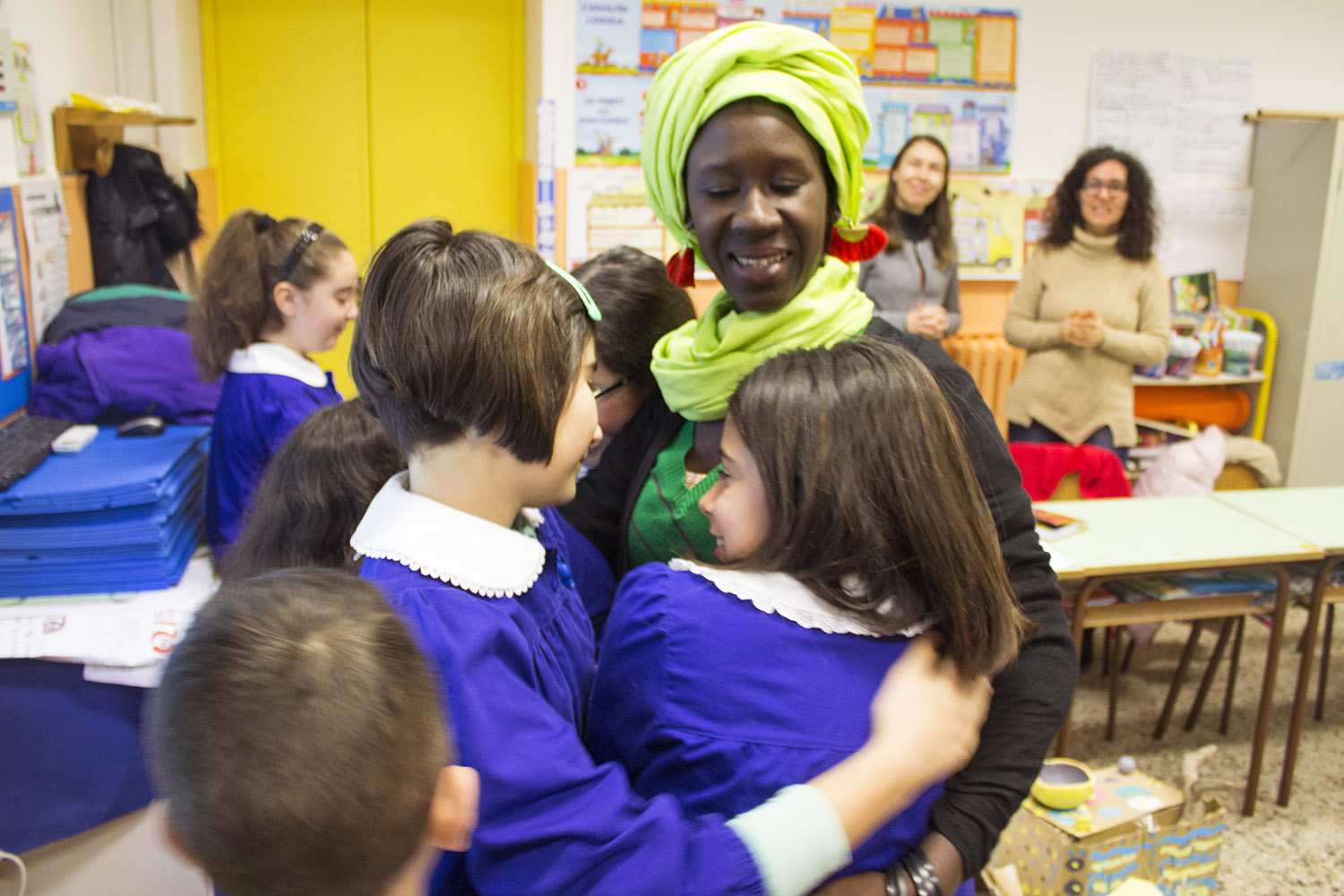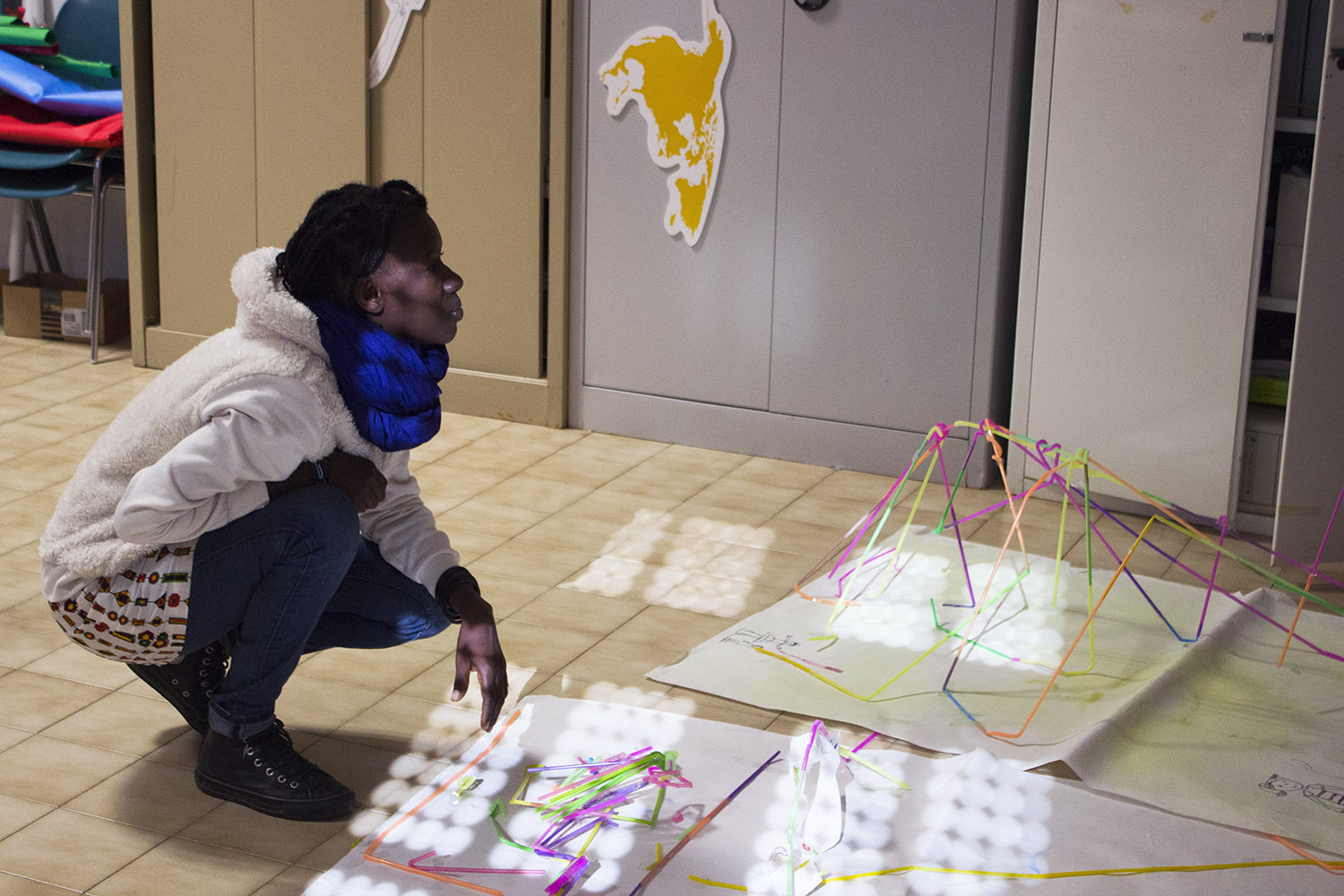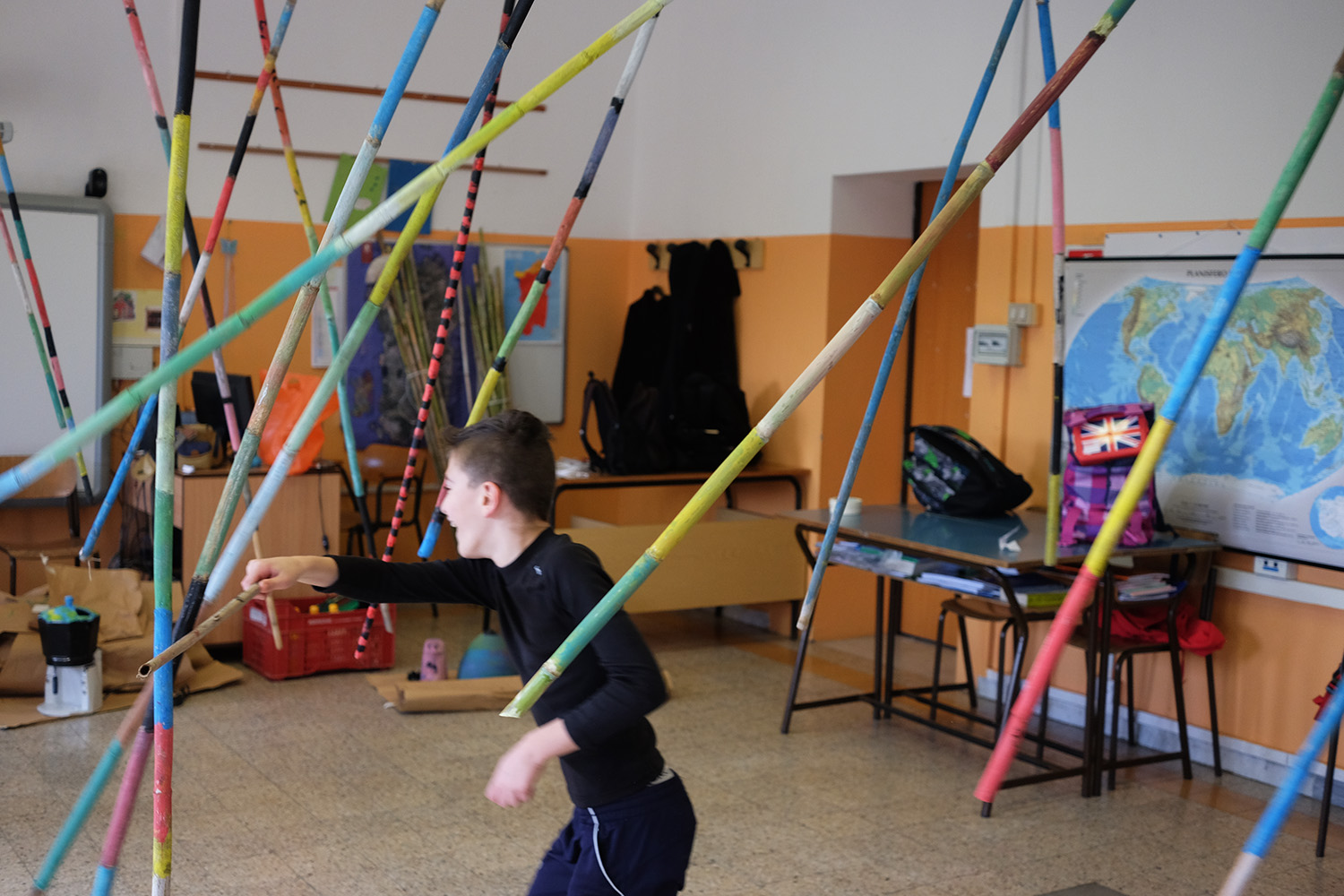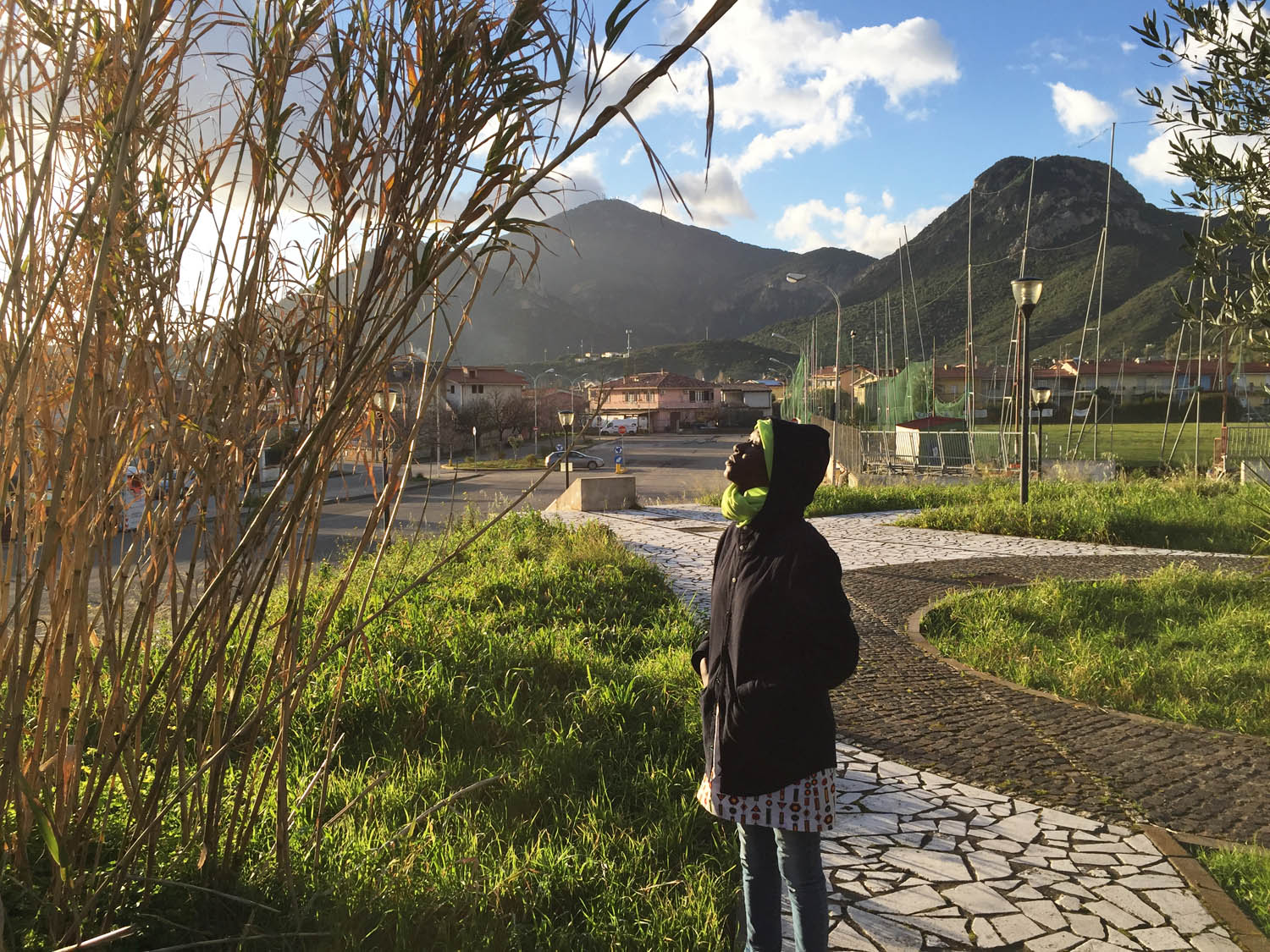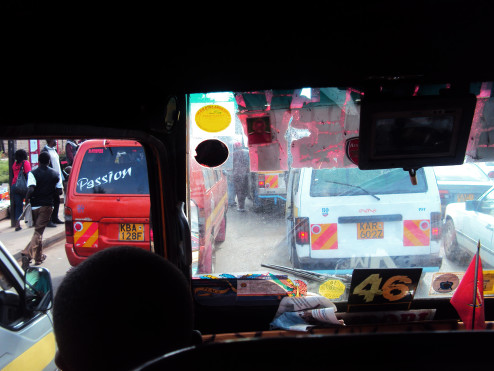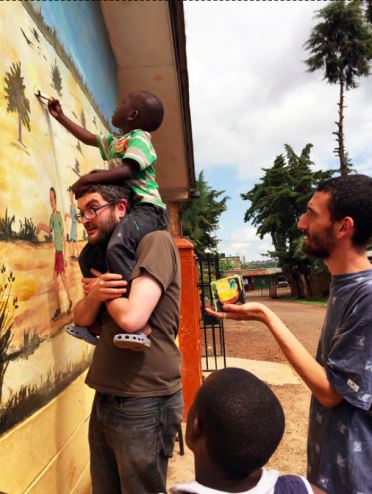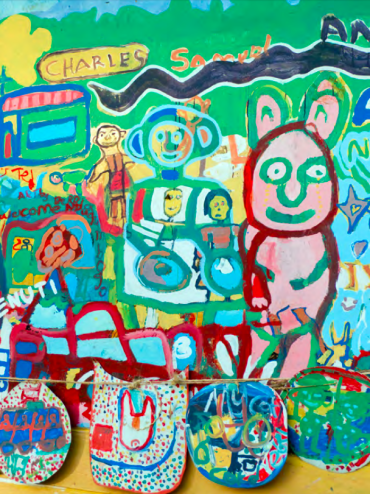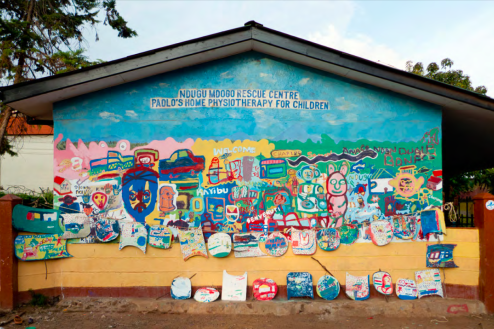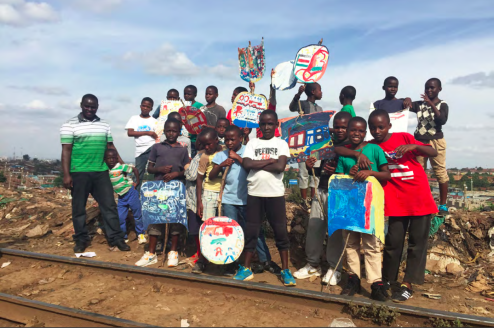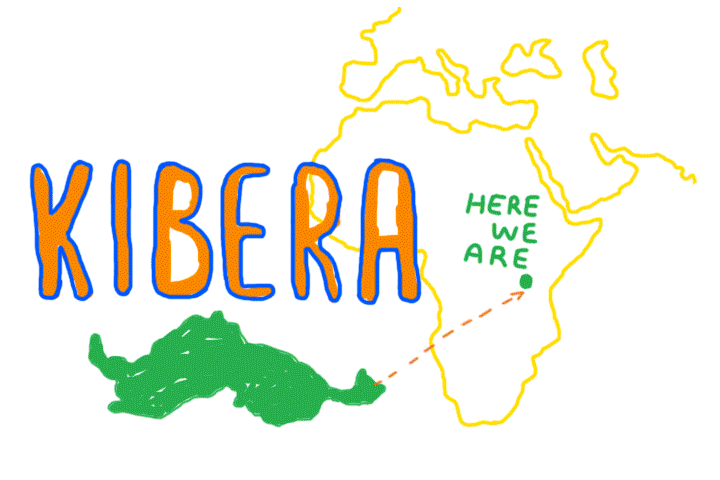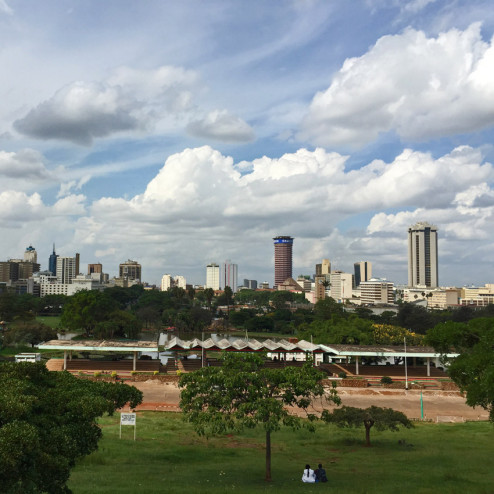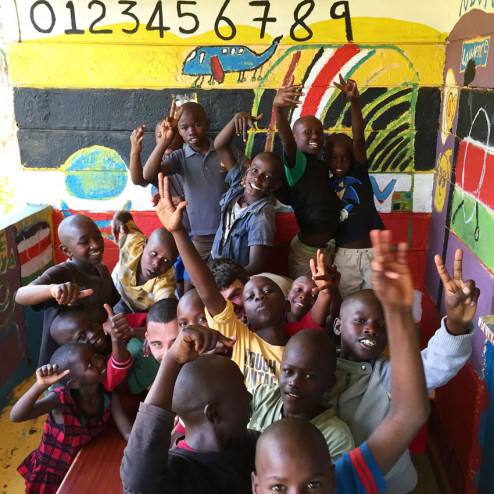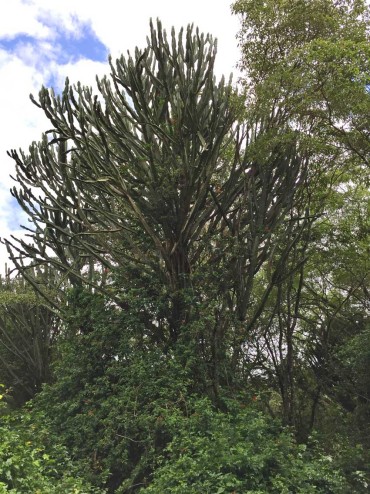Workshop #3: Dexi Tian
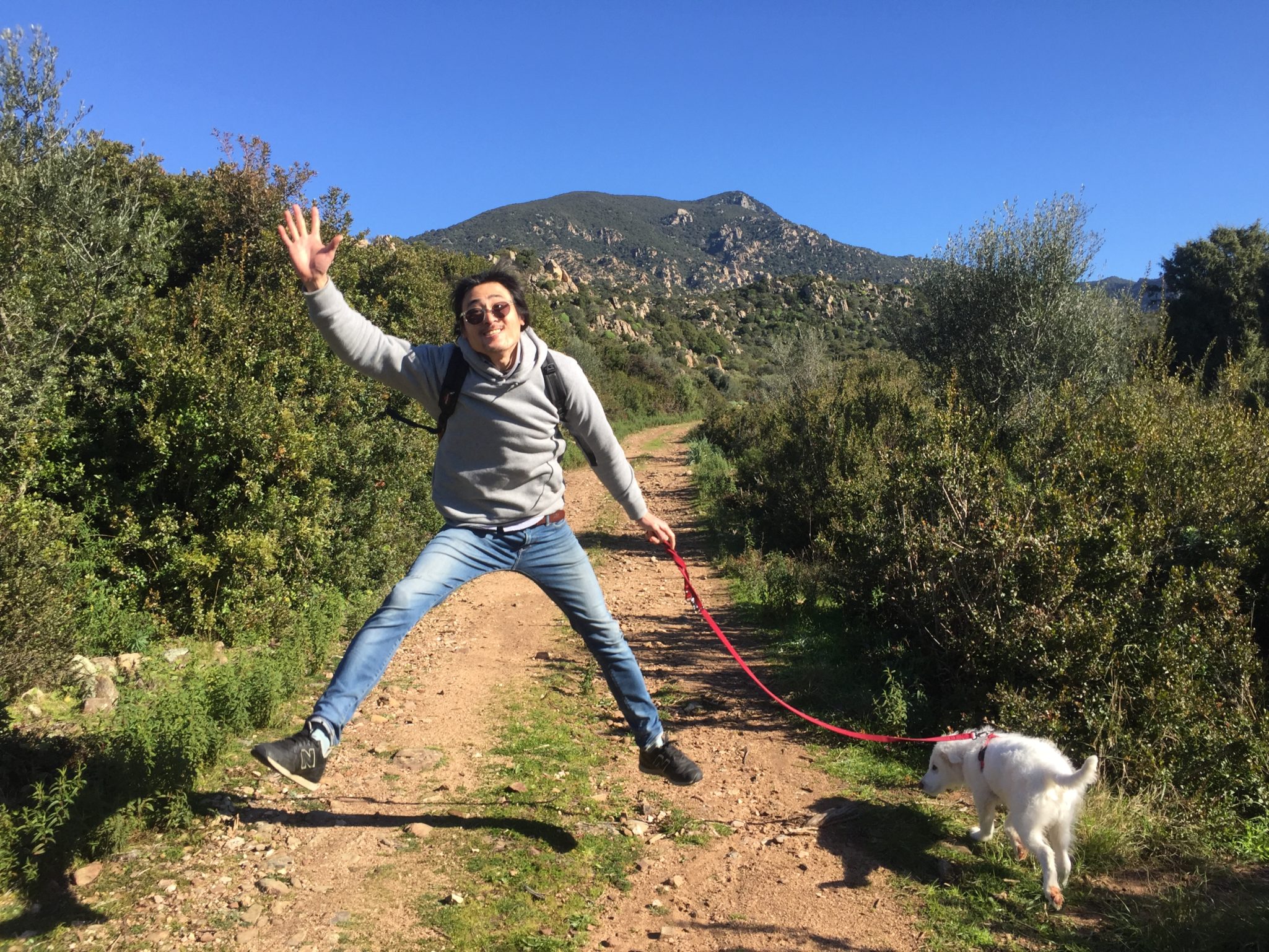
Interview with Dexi Tian (English/French)
by Derek MF Di Fabio
–
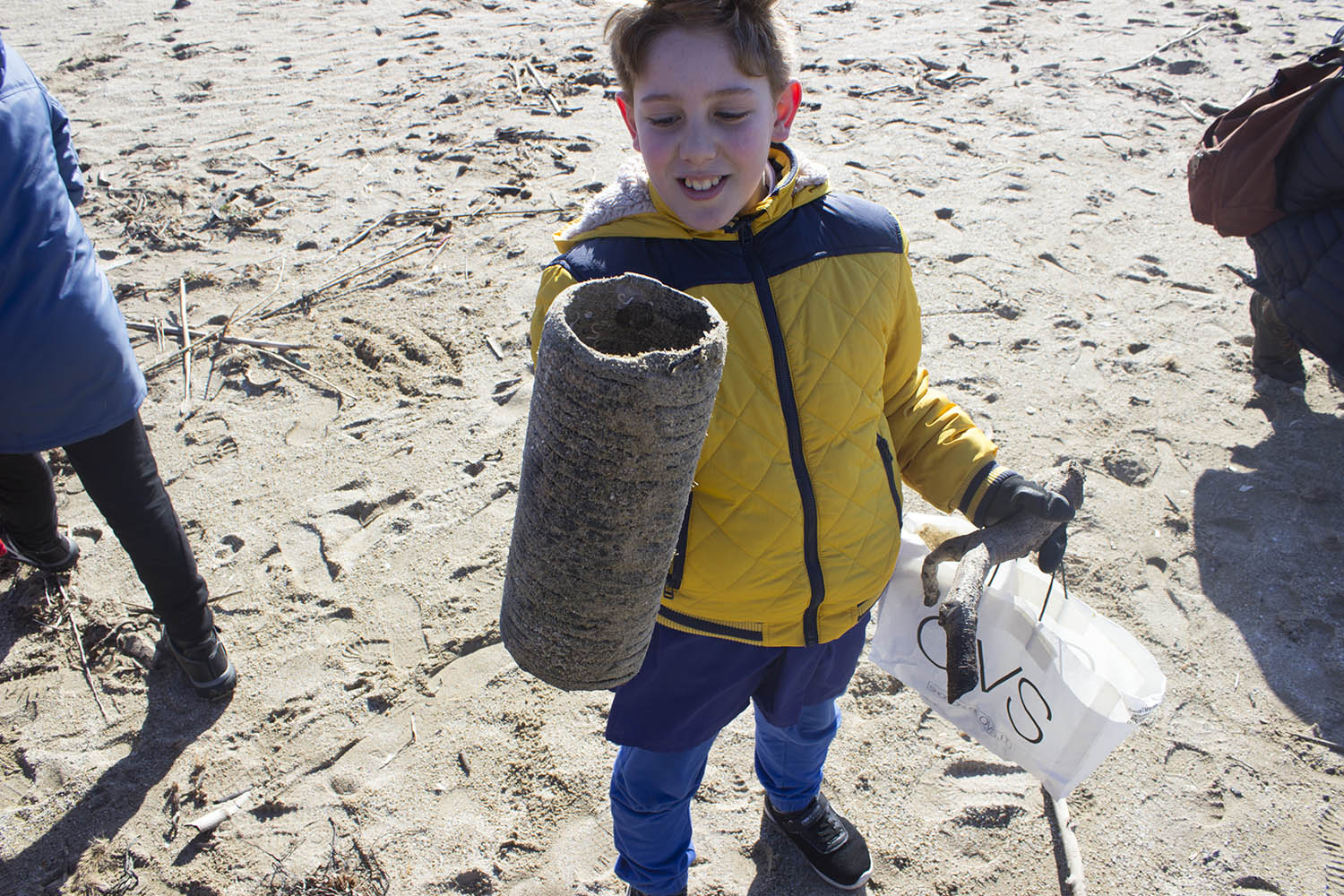
It’s funny how some expressions and sounds stick to our minds. In English there is an expression called Earworm, you use to say when you wake up with a song and it doesn’t go away, so every now and then you’ll find yourself sing to it. It can be contagious, and the people with you may sing that same song without really knowing why. Probably that song will influence your rhythm and your moves during the day. With the classes, we went to look for materials on the beach of Fontanamare and in a park in Domusnovas, we had to translate your way-of-seeking, your searching method, to the children: how would you describe it? How would you describe your gaze?
Selon moi l’art est partout. Ca veut dire qu’il faut aimer le penser et garder la curiosité. Je travaille beaucoup avec les objets trouvés. Ou plutôt ce sont eux qui semblent me trouver, par hasard, lors de mes promenades. C’est grâce à notre société : elle nous propose trop de marchandises,partout, tellement qu’elles finissent par déborder et devenir une partie de la nature. Souvent elles se manifestent sous forme de pollution. Dans cette société de surconsommation certains voudraient régler le problème par de multiples réglementations voir dans certains cas par l’interdiction.Mais je pense que c’est mieux de nous changer nous mêmes, changer notre façon de vivre . A chacun de trouver sa façon de vivre, savoir ce dont on a vraiment besoin, ne pas simplement suivre la mode. Trouver son propre sens dans la vie.
C’est alors que la vie deviendra simple et claire. C’est comme lorsqu’un objet semble m’attendre là, au coin d’une rue.
Je réfléchis beaucoup aux relations entre la vie et l’art. Parfois je me dis qu’ils sont pareils, d’autres fois qu’ils sont différents.
Le plus intéressant pour moi c’est quand l’art se fond dans la vie, c’est alors que l’art se transcende.En fait toutes les choses ont une utilité, ça dépend seulement du regard qu’on leur porte. Tout comme les individus: chacun est utile dans la société. Il faut juste trouver sa bonne place. Tout est possible, il faut juste agir.
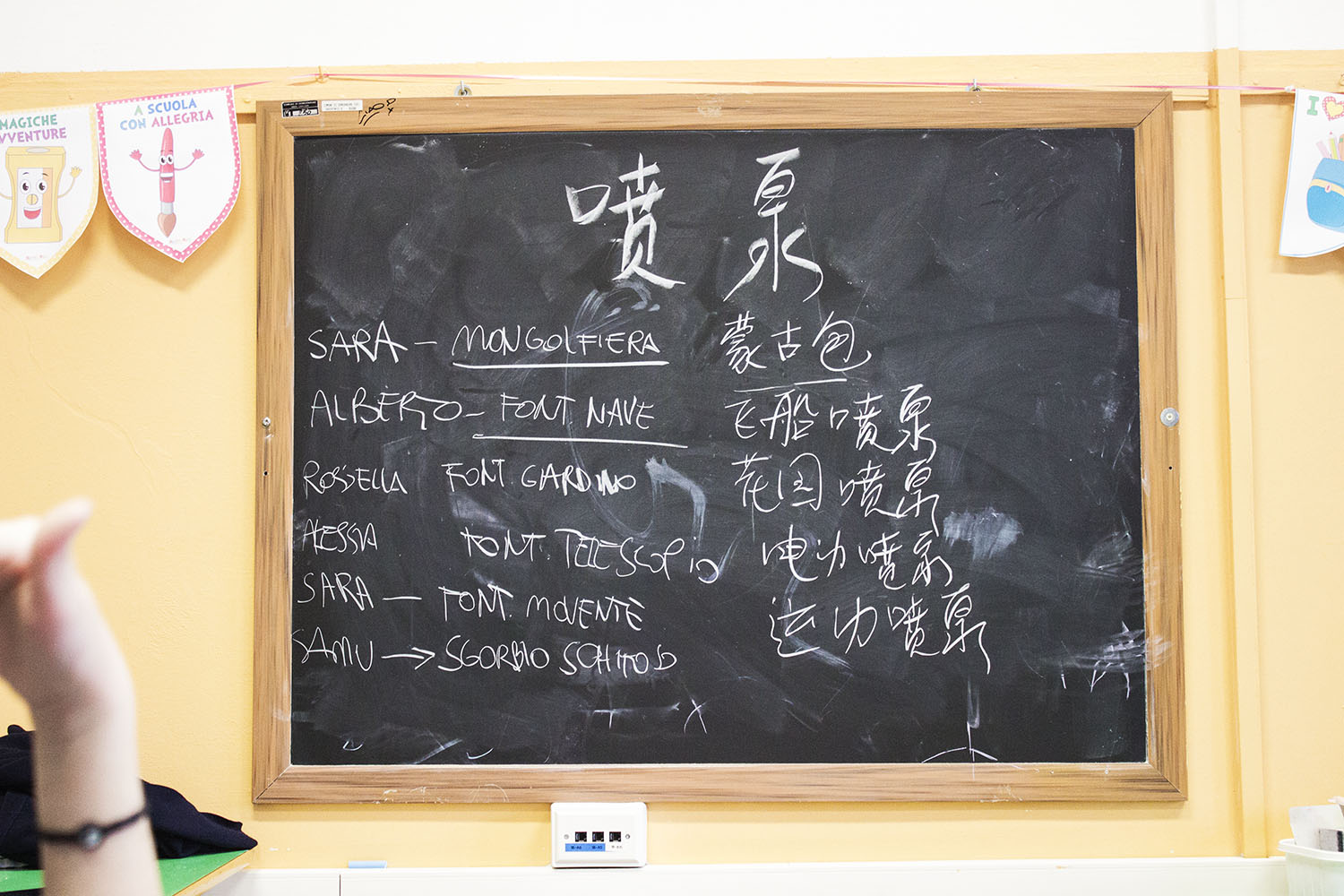
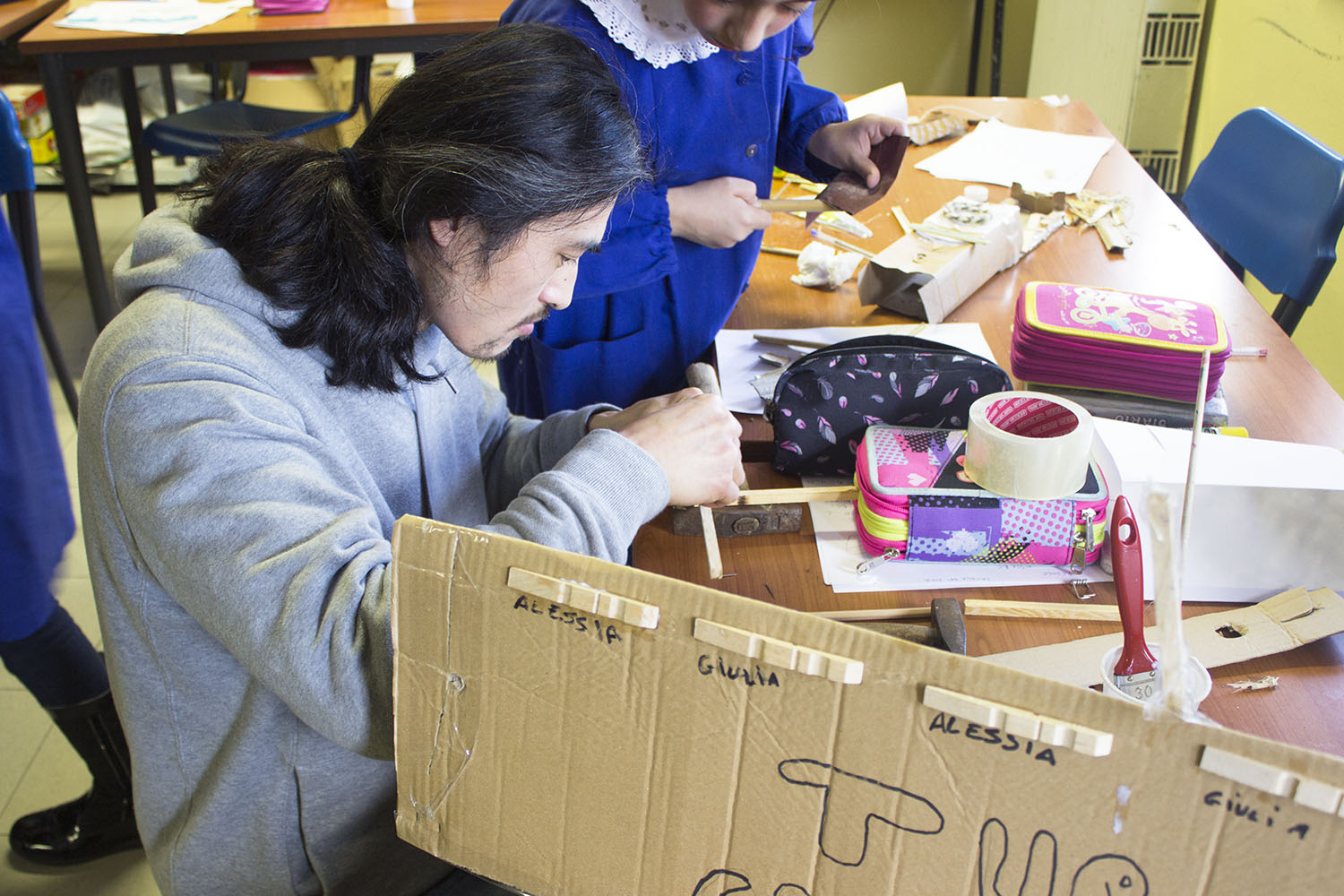
–
It was very interesting to bring your practice to the children of four different schools in Sulcis, what do you remember more from these meetings?
Je trouve que les enfants sont très ouverts, ils ont des pensées incroyables, très différentes les unes des autres. Ils sont très intéressants. Surtout ils peuvent les concrétiser très vite avec tout ce qu’on a trouvé, ca c’est incroyable. J’ai passé beaucoup de temps pour réfléchir pour trouver cette façon de travailler, mais pour eux ça a l’air tellement naturel. Malgré la difficulté de la langue, on a bien travaillé. Et on s’est bien amusés. J’en garde un souvenir souriant.
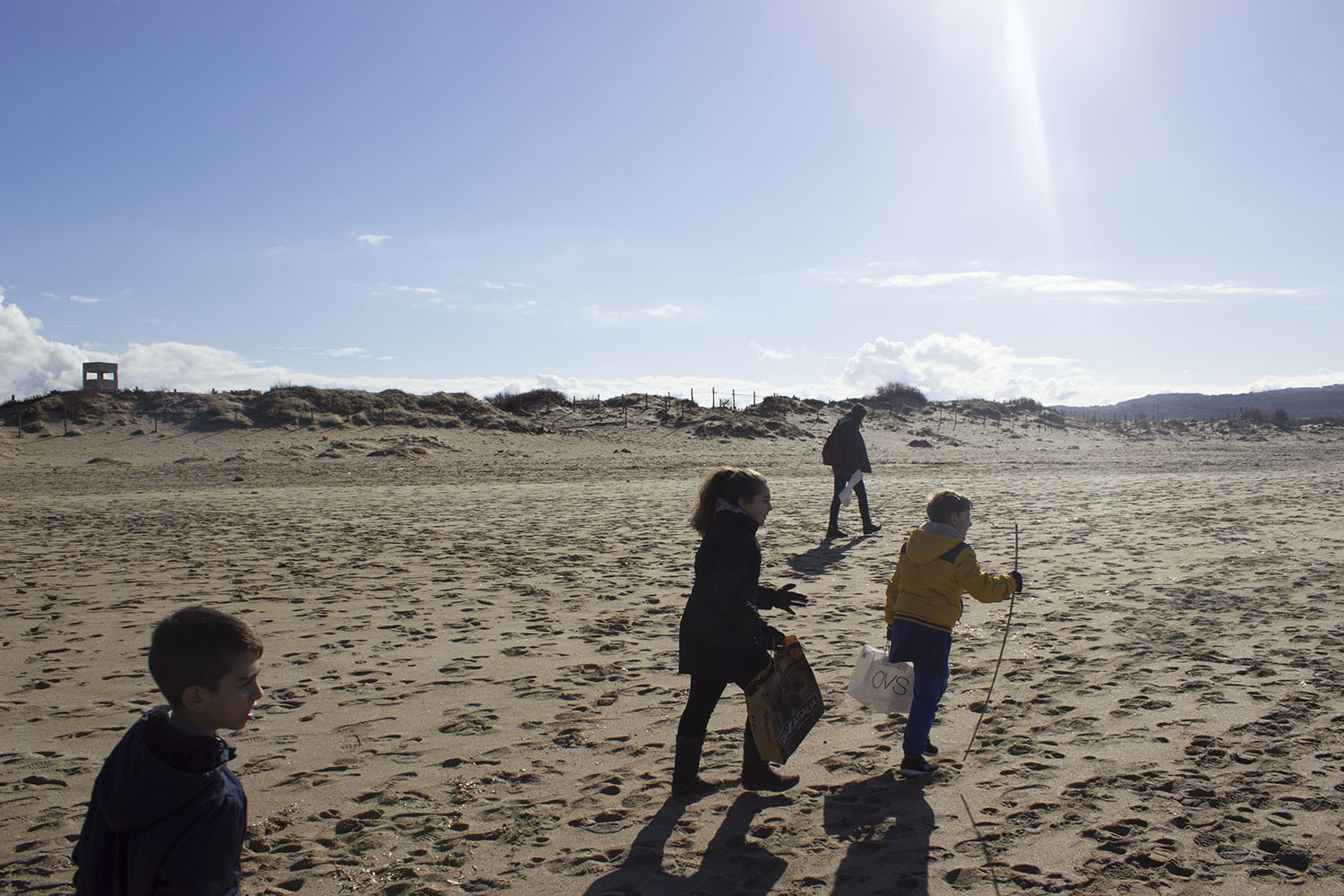
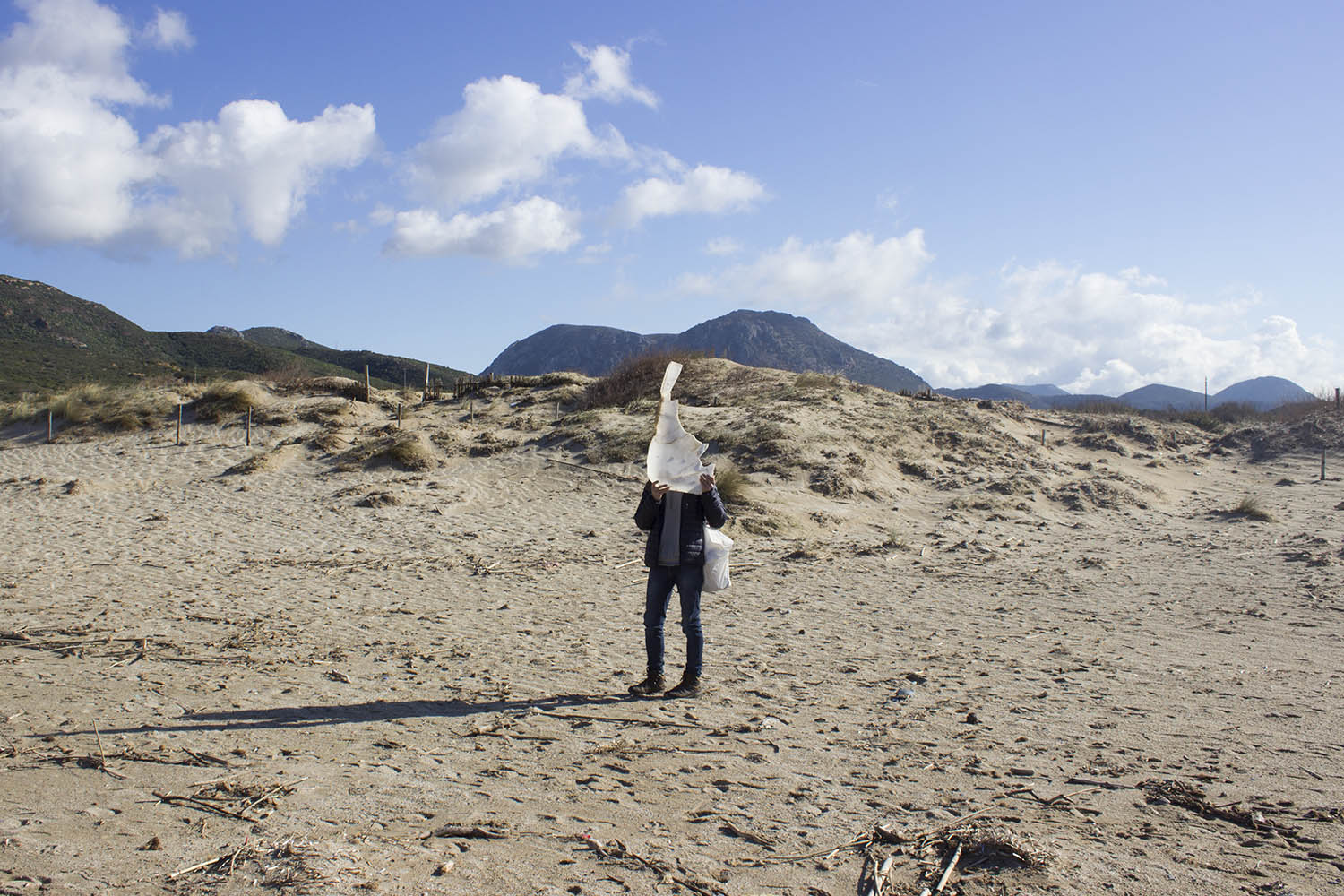
–
Every morning we crossed some mountains to reach the Iglesiente area. Some mornings were super sleepy that we couldn’t speak, other mornings were full of clouds and driving-down the hills was like diving into a foamy dream. Sheeps were crawling particular fields, once we catch three identical shepherd dogs, the water of a spring gets out from a plastic pipe on that route, another time we had to slow down following a nails-slow truck, and once we stopped to check a massive hotel-restaurant that was never finished and it sleeps for the last 30 years. One of those mornings we spoke about materials: your work is based on “sought-for objects”, in which objects you are interested to?
Chacun a ses goûts . Le goût des aliments , des vêtements,la vie quotidienne. Chacun est différent. Tout comme il y a différents types de collectionneurs. Moi par exemple ce que je collectionne ce sont les objets . j’aime bien les objets en bois , en verre, et des pierres . J’aime bien leur forme, leur matérialité. Mais aussi dans chaque objets, il y a le temps, le passé et les traces. Avec l’espace ,Ça raconte beaucoup d’histoire. J’adore les mélanger et créer des hybridations pour trouver de nouvelles relations entre eux. C’est ça qui m’amuse bien.
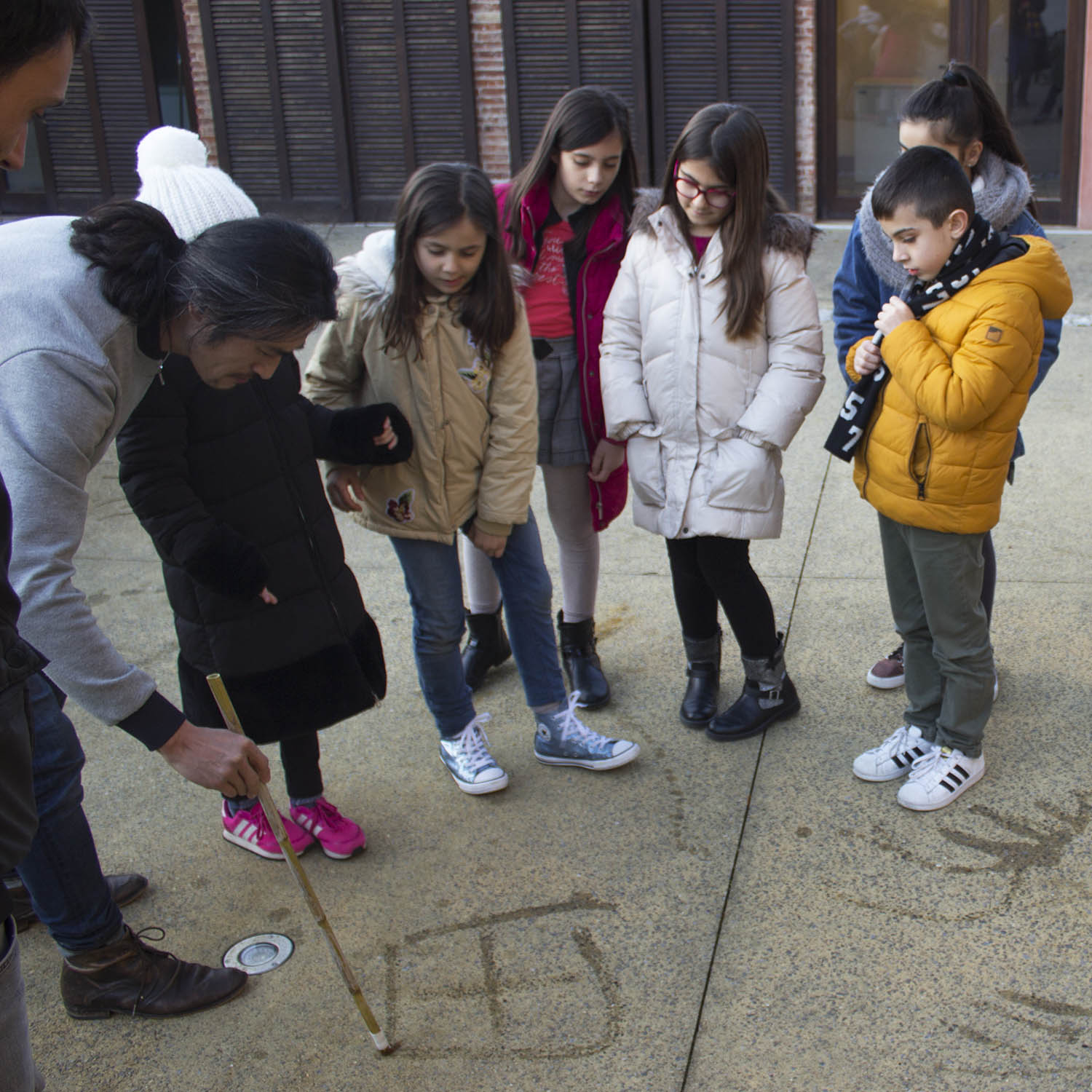
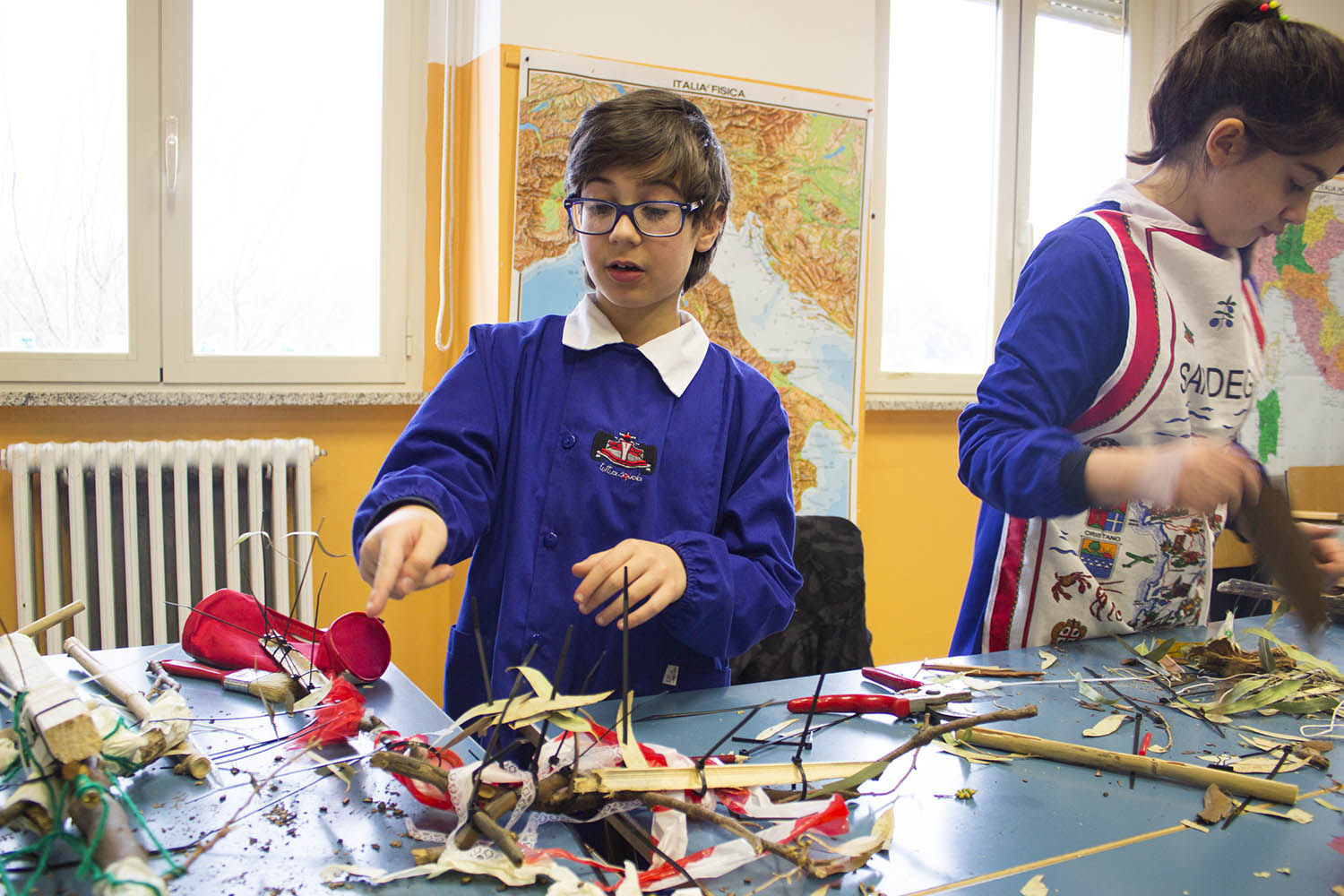
–
All your sculptures are composed by usedobjects, objects that humans had touched, scrubbed, eaten, thrown, lost or forgot.I was looking online a sculpture you were telling us about, but I couldn’t found it: some human phalanxes made out in some metal, you had found them in a burnt house therefore those finger partly fused together. Or you produced for us two sculptures, we walked with you to collect some of their elements you had seen before during a walk: some animal-jaws and some ceramic parts were soaked in the dirty water of a little canal, under a bridge, in the periphery of the small village where we are based, Perdaxius. It seems that most of your elements came from a twilight zone, although they had been passed and dance under the spotlights. You came from a big Chinese city, and then you moved to Paris and recently you moved to the woods outside the French capital: what is a periphery and what is its role?
Pourquoi m’intéresser à la banlieue. Car je trouve que les banlieues sont les lignes entre la société et la nature. Sur cette ligne, on voit les relations des hommes avec la nature. Parfois c’est la guerre, parfois il y a une harmonie sensible. Et c’est cela qui a posé beaucoup de questions. La question de pollution bien sur, la question de vivre ensemble, comment améliorer la relation ?Là c’est le point qui m’intéresse.
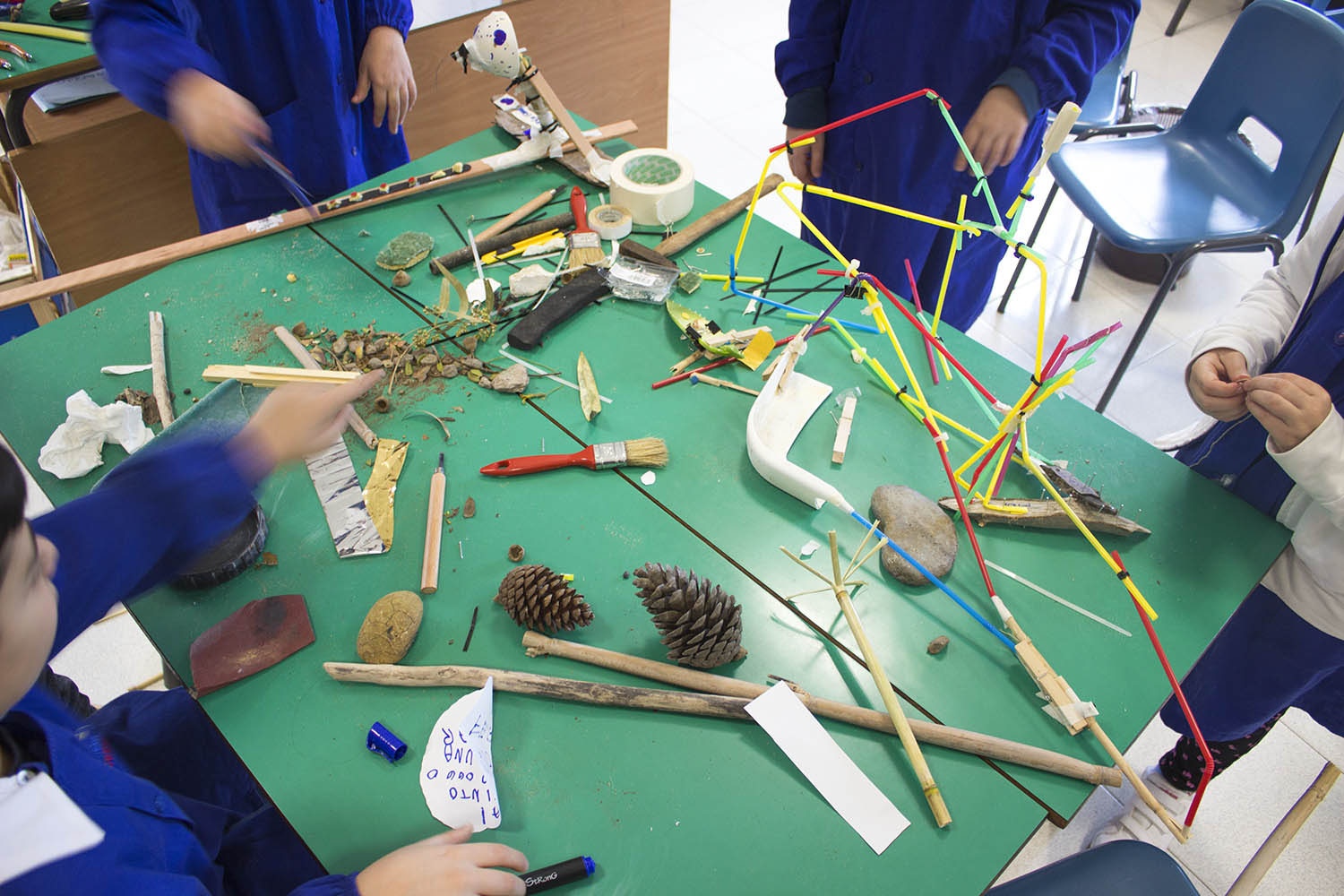
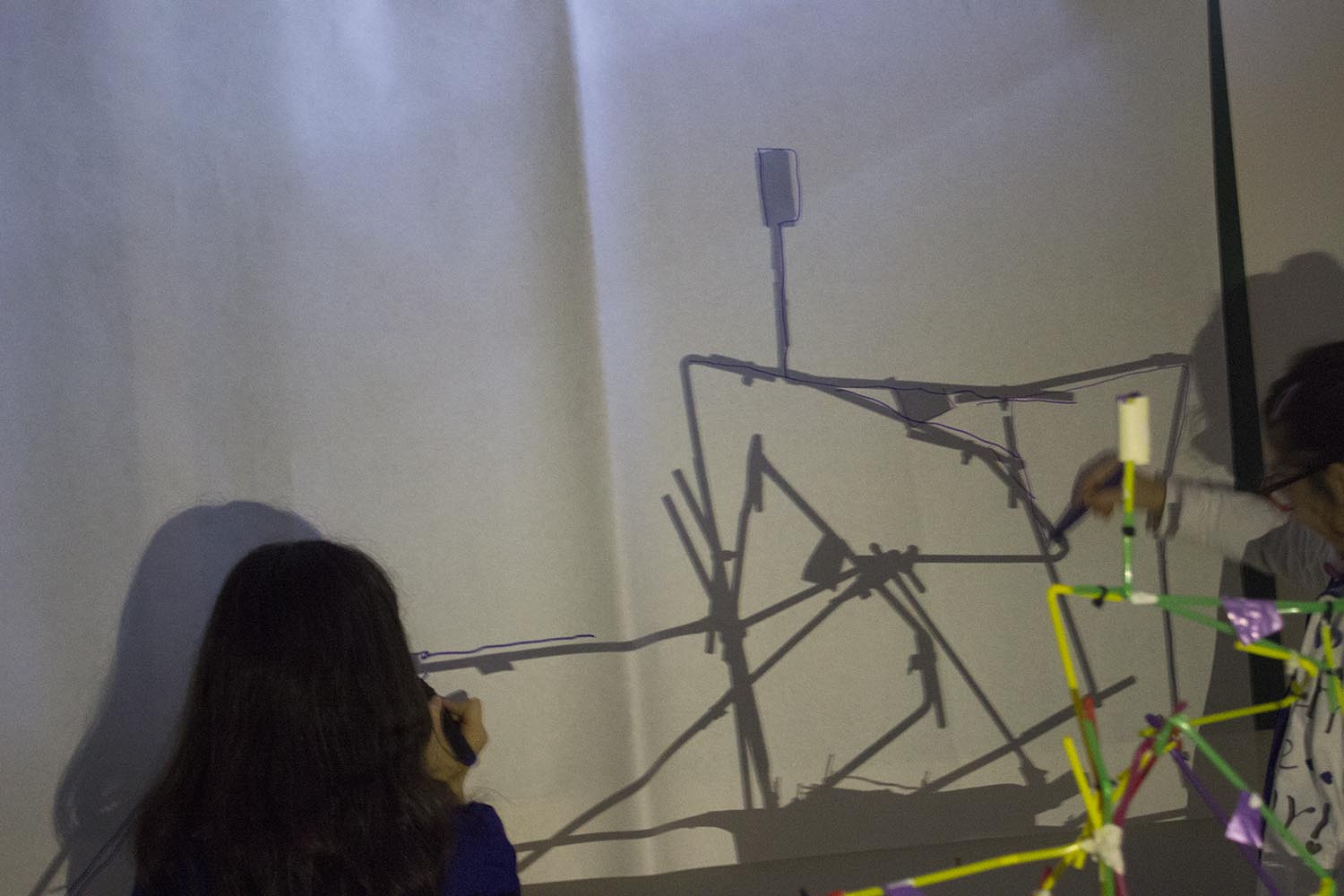
–
Then these elements are composed: as we were setting up in the school, all the different tools and instruments are tidily ordered and then you operate. “Le cadavre exquis” jumps to my mind but also some notions of Chinese language you presented to the classes: how a number of ideograms next to each other means an object, or how, if repeated together, the same ideogram can shift its meaning and become multitude / an abstract idea…. is it connected to your work or I’m just making it up?
Oui , bien sur. Il y a ce sens, mais pas seulement. L’écriture chinoise est une ancienne culture, qui perdure jusqu’à présent. C’est la plus ancienne écriture qui est utilisée jusqu’à maintenant. En tout il y a plus de dix mille caractères. C’est une richesse inimaginable. Il est comme une ligne qui relie le présent et le passé. On peut voir la vie des anciens et leurs évolutions . Et ça va évoluer en continu. Les écritures c’est comme les racines ,ça sort naturellement dans ma pensée et dans mes travaux. Les objets je les vois comme des mots, et les installations comme des poésies, une poésie visuelle en dimension.
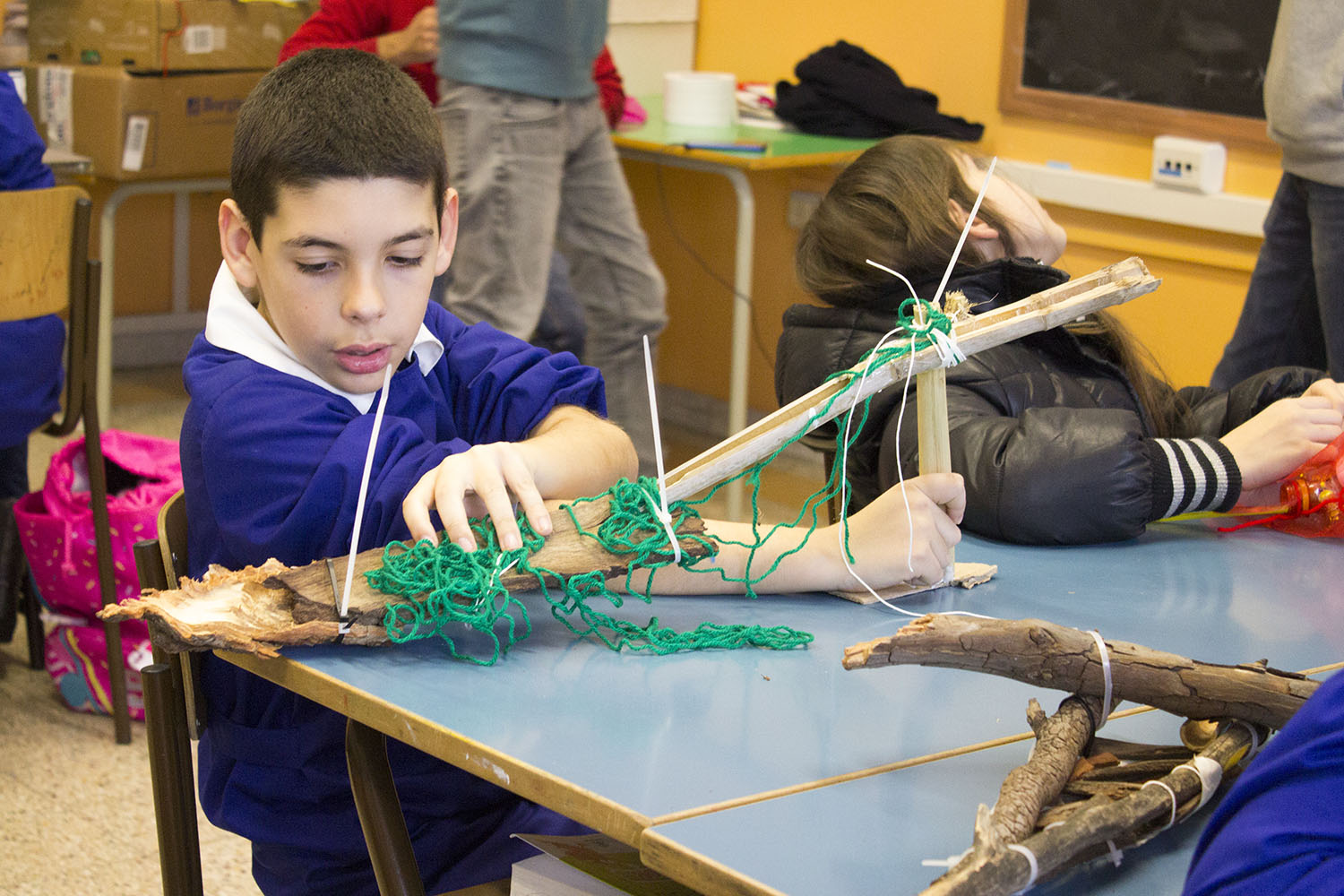
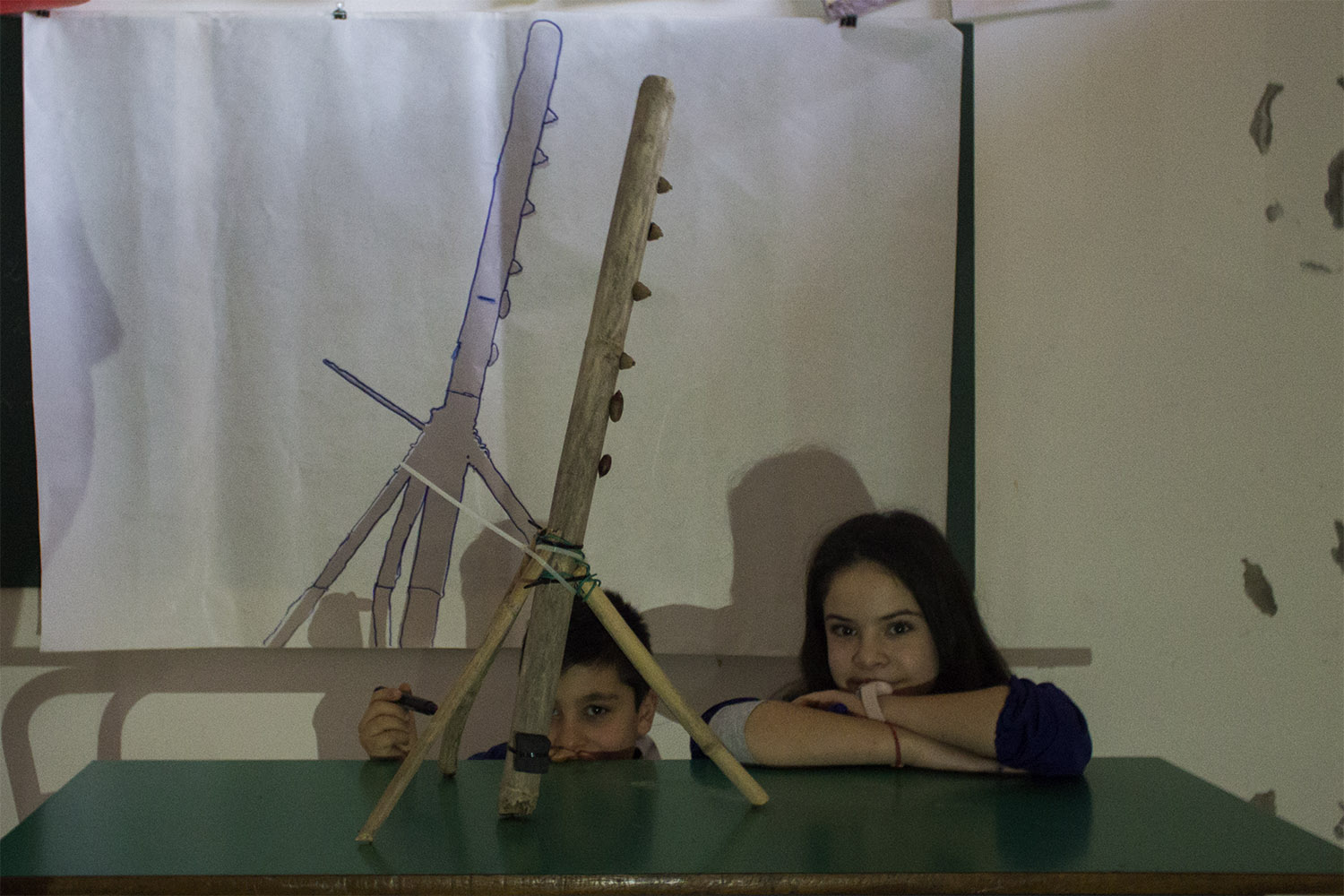
–
…and to conclude: can you tell us few things about the association you are part of?
L’association VIA est une association d’ art contemporain qui a été créé par plusieurs artistes et commissaires. L’Idée c’est un chemin pour l’art. Son esprit est dans la pratique. C’est comme s’il n’y avait pas de route au début, ce sont les gens qui marchent dessus, qui, avec le temps, ont créé un chemin. L’art a besoin de curiosité et de courage.et les pratiques dans la vie. Parfois , les vies des artistes ne sont pas toujours faciles, surtout à la sortie de l’école. l’esprit de l’association c’était d’aider les jeunes artiste à trouver leurs chemins, pour encourager et avancer . Par exemple trouver des endroits et des opportunités pour exposer , montrer leurs travaux, et parfois organiser des courtes résidences etc …Mais maintenant, la route s’est un peu perdue dans des méandres. Il faut beaucoup de travail, continuer d’avancer, trouver la bonne route.
Enfin merci à l’association cheremus, qui m’a donné cette chance de travailler avec les enfants. C’est un super projet. J’ai passé des moments inoubliables en Sardaigne. J’espère que l’association va continuer, et grandir. Merci encore, à bientôt.
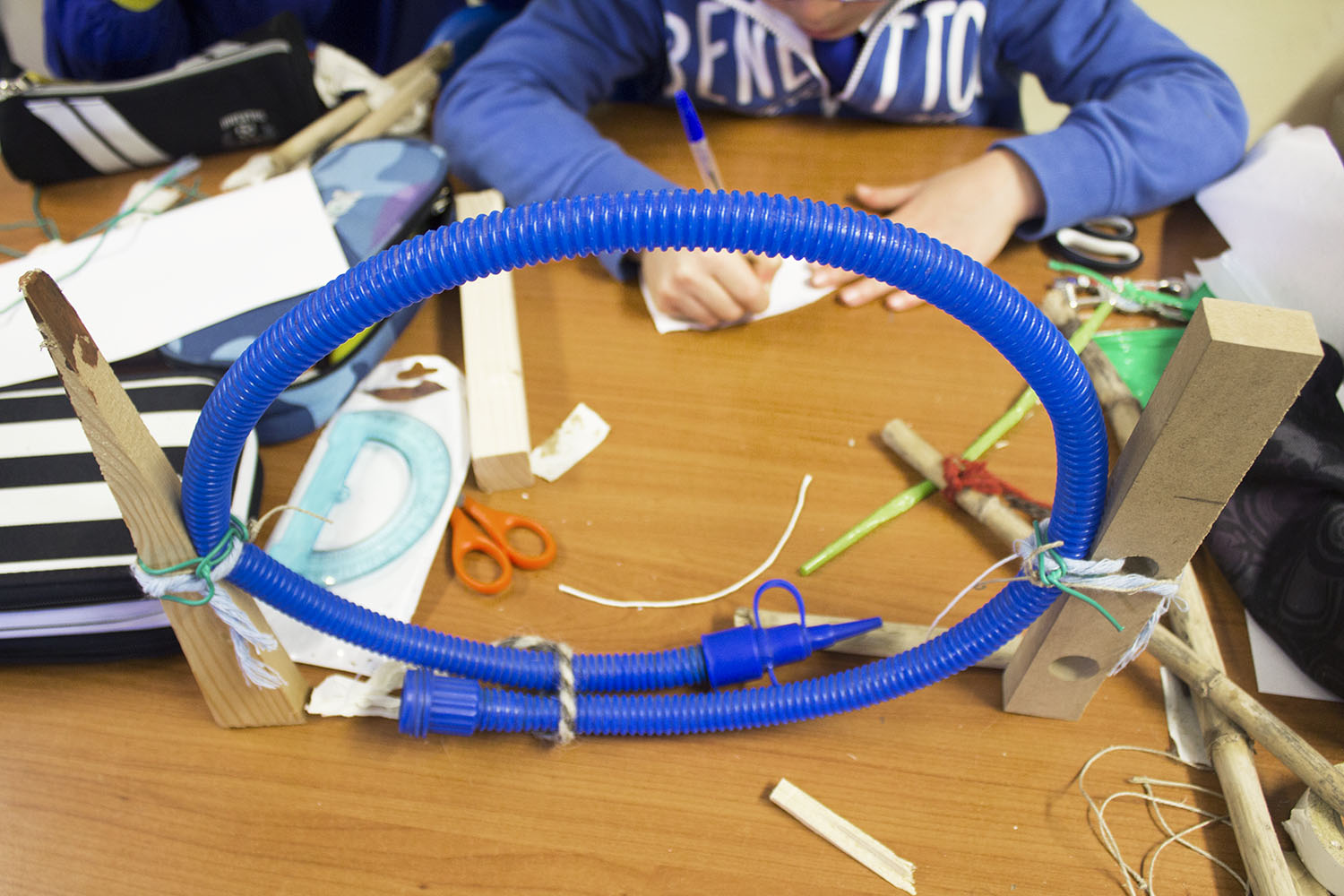

–
Per il terzo appuntamento con i laboratori dei Giardini Possibili, Cherimus collaborerà con l’artista Dexi Tian, selezionato da Martina Köppel-Yang, co-curatrice della biennale d’arte di Sichuan 2018 (Cina).
L’artista nelle prossime due settimane lavorerà con i bambini delle scuole elementari di Villamassargia, Domusnovas, Musei e Iglesias, affiancato dagli artisti Derek MF Di Fabio e Carlo Spiga.
Il giorno 18 di gennaio è prevista una presentazione del lavoro di Dexi Tian aperta a tutti presso la Casa Occheddu di Domusnovas.
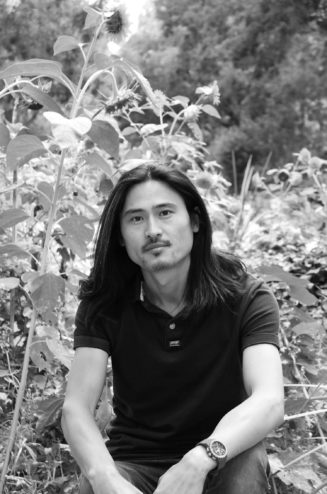
Dexi Tian, nato in Cina nel 1979, vive e lavora a Parigi. Poeta dei materiali, Dexi sviluppa un rigoroso lavoro di ricostruzione della realtà partendo da elementi recuperati. Per lui, gli oggetti sono come parole: riassemblati e installati in nuovi spazi, danno loro un’altra risonanza. .Nel tentativo di conciliare arte e vita, è anche interessato a trovare un posto alla permacultura nella sua arte.
Dexi Tian ha partecipato a numerose mostre e festival in Europa e in Asia: Museum Liu Haisu, Shanghai (CINA), Gallery LIUSA WANG (FR), the 6B, Paris (FR), Gallery PARIS HORIZON, Paris (FR), Abbatiale Saint-Ouen, Rouen (FR), CIGE, Beijing, (CHINA), Kunstverein Nurtingen (DE), La Papeterie de Seine, Parc du chemin de l’Ile, Nanterre (FR), Gallery IEFO, Paris (FR), Gallery AREA, Paris (FR), Gallery Tamtam Art Taipei (TAIWAN), Gallery Espace des Arts Sans Frontières, Paris (FR), gallery International City of Arts, personal exhibition, Paris (FR), Castel Liversan, Haut Médoc, Bordeaux (FR). Dexi Tian lavora anche al di fuori degli spazi istituzionali, con workshop e altre forme ibride.
